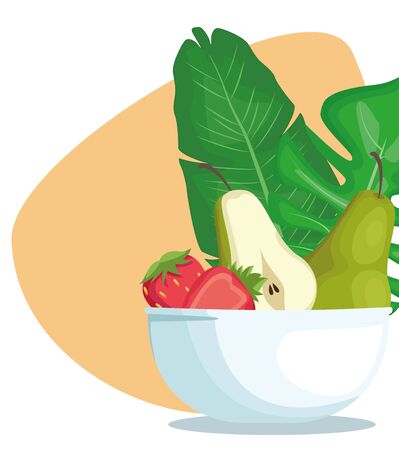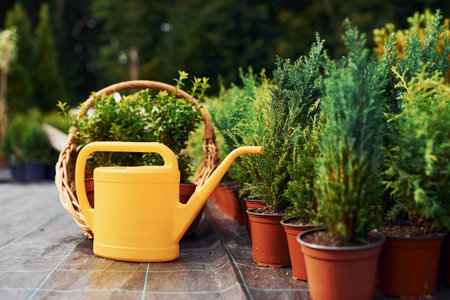1. Choosing the Right Location and Tools
Starting your first vegetable garden is exciting, but picking the right spot and having the right tools can make all the difference. Whether you have a big backyard or just a small patio, you can still grow delicious veggies with the right setup.
Finding the Perfect Spot
Most vegetables need at least 6 to 8 hours of direct sunlight each day. Look for a spot in your yard that gets plenty of sun and has good drainage. If youre using containers on a patio or balcony, make sure they’re placed where sunlight hits them most of the day.
What to Look For:
| Feature | Why It Matters |
|---|---|
| Sunlight (6-8 hours) | Vegetables need lots of light to grow healthy and strong. |
| Well-drained soil | Avoid soggy spots where water collects after rain. |
| Shelter from strong winds | Helps protect delicate plants from damage. |
| Close to water source | Makes watering easier and more convenient. |
Essential Gardening Tools for Beginners
You don’t need fancy equipment to start gardening—just a few basic tools will do the trick. Here’s a simple list of must-haves for first-time vegetable gardeners:
Basic Tool Checklist:
| Tool | Purpose |
|---|---|
| Hand Trowel | Perfect for digging small holes and transplanting seedlings. |
| Garden Gloves | Protects your hands from dirt, thorns, and blisters. |
| Watering Can or Hose | Keeps your plants hydrated, especially during dry spells. |
| Pruners or Shears | Helps trim dead leaves or harvest veggies cleanly. |
| Garden Fork or Hoe | Useful for breaking up soil and removing weeds. |
With the right location and a few simple tools, youre well on your way to growing your very first vegetable garden. In the next section, well explore which easy-to-grow vegetables are perfect for beginners like you!
2. Understanding Soil, Sunlight, and Water Requirements
Before you start planting your first vegetable garden, it’s important to understand the basic needs of your plants. Even easy-to-grow vegetables need the right environment to thrive. Heres a beginner-friendly guide to soil, sunlight, and water—three essentials for a successful garden.
Healthy Soil: The Foundation of Your Garden
Good soil is key to growing strong, healthy vegetables. Most vegetables prefer well-draining, nutrient-rich soil with a balanced pH (around 6.0 to 7.0). You can improve your soil by mixing in compost or organic matter. If youre not sure about your soil type, grab a simple soil testing kit from your local garden center or hardware store.
Basic Soil Prep Tips for Beginners:
- Loosen the soil: Use a garden fork or shovel to loosen the top 8–12 inches.
- Add compost: Mix in compost to boost nutrients and help with drainage.
- Avoid compacting: Don’t step on your planting beds—compact soil makes it hard for roots to grow.
Sunlight: How Much Is Enough?
Most vegetables love the sun! Aim for an area that gets at least 6–8 hours of direct sunlight per day. Leafy greens like lettuce and spinach can tolerate partial shade, but fruiting veggies like tomatoes and peppers need full sun to produce well.
| Vegetable | Sunlight Needs |
|---|---|
| Lettuce | 4–6 hours (partial shade OK) |
| Tomatoes | 6–8+ hours (full sun) |
| Carrots | 6+ hours (full sun preferred) |
| Zucchini | 6–8 hours (full sun) |
| Spinach | 4–6 hours (partial shade OK) |
Watering: Keep It Simple and Consistent
Your plants need regular watering, especially in hot or dry weather. A good rule of thumb is about 1 inch of water per week, including rainfall. Early mornings are the best time to water so leaves can dry out during the day and avoid disease.
Easy Watering Routine for New Gardeners:
- Use a watering can or hose with a gentle spray nozzle.
- Check moisture by sticking your finger into the soil. If it feels dry an inch down, its time to water.
- Avoid overwatering. Too much water can lead to root rot—make sure your soil drains well.
- Mulch around plants. This helps keep moisture in and cuts down on how often you need to water.
By understanding these three basics—soil, sunlight, and water—you’ll set yourself up for gardening success with any of the top 10 easy-to-grow vegetables!

3. Top 10 Easy Vegetables for Beginners
If youre just starting out in gardening, its important to choose vegetables that are low-maintenance, quick to grow, and adaptable to different U.S. climates. Heres a list of the top 10 easy-to-grow vegetables perfect for first-time gardeners. These crops are forgiving, require minimal equipment, and can thrive in backyard gardens or even containers.
Top 10 Beginner-Friendly Vegetables
| Vegetable | Why Its Great for Beginners | Best Growing Season |
|---|---|---|
| Tomatoes | Popular, easy to grow in containers or garden beds; lots of varieties | Late spring to summer |
| Lettuce | Fast-growing; harvestable in as little as 30 days | Spring and fall |
| Radishes | Matures quickly; great for succession planting | Early spring and fall |
| Zucchini (Summer Squash) | Very productive; grows well with little effort | Late spring to summer |
| Green Beans | No need for transplanting; bush types don’t require support | Late spring to summer |
| Carrots | Tolerant of cooler weather; fun to pull from the soil at harvest time | Spring and fall |
| Cucumbers | Fast growers; perfect for trellising in small spaces | Late spring to summer |
| Spinach | Nutrient-rich; grows well in cooler temps | Early spring and fall |
| Peas (Snap or Snow) | Climbing vines that do well in cool weather; sweet and crunchy pods | Early spring and fall |
| Basil | Aromatic herb that pairs well with tomatoes; thrives in warm weather | Late spring to summer |
Helpful Tips for Success:
- Start with good-quality seeds or starter plants from a local nursery.
- Use raised beds or containers if your soil isn’t ideal.
- Water regularly but don’t overdo it — most veggies prefer consistent moisture.
- Add mulch around plants to retain moisture and reduce weeds.
This list is designed to give new gardeners a strong start with tasty, rewarding results. Whether you’re growing in a backyard, patio, or balcony, these vegetables are sure to make your gardening journey more enjoyable and successful.
4. Simple Planting and Maintenance Tips
Starting your first vegetable garden can feel overwhelming, but with a few easy steps and low-maintenance strategies, you’ll be growing fresh veggies in no time. Here’s a simple guide to help you plant and care for the top 10 easy-to-grow vegetables.
Step-by-Step Planting Guide
Each vegetable has slightly different needs, but most are beginner-friendly if you follow these basic steps:
| Vegetable | When to Plant | Spacing | Sunlight Needs | Soil Tips |
|---|---|---|---|---|
| Tomatoes | After last frost | 18-24 inches apart | Full sun (6+ hrs) | Well-drained, rich in compost |
| Lettuce | Early spring or fall | 6-12 inches apart | Partial to full sun | Loose, cool soil; keep moist |
| Zucchini | After last frost | 24-36 inches apart | Full sun | Nutrient-rich, well-drained soil |
| Carrots | Early spring or late summer | 1-2 inches apart (thin later) | Full sun | Sandy, loose soil for root growth |
| Cucumbers | After last frost | 12-18 inches apart or on trellis | Full sun | Add compost; water evenly |
| Radishes | Early spring or fall | 1 inch apart (thin later) | Full sun to partial shade | Lose soil; avoid heavy clay soils |
| Green Beans | After last frost date passes | Bush: 4-6 inches; Pole: 6-8 inches + support | Full sun | Add mulch; water consistently during flowering & pod set |
| Basil (herb) | After danger of frost is gone | 12 inches apart | Full sun | Loves warm soil; pinch flowers to extend harvest |
| Kale | Spring or fall | 12-18 inches apart | Full sun to partial shade | Tolerates cooler temps; keep moist for tender leaves |
| Pepper (bell or hot) | A couple weeks after last frost date | 18-24 inches apart | Full sun | Add compost before planting; use mulch for moisture retention |
Caring for Your Garden Made Easy
Irrigation Tips:
- Water deeply and less frequently: This encourages deep roots and healthier plants.
- Aim for early morning: Watering in the morning reduces evaporation and keeps leaves dry, which helps prevent disease.
Pest Control Without Stress:
- Diversify your plants: Mixing herbs like basil or marigolds among veggies can naturally deter pests.
- Inspect regularly: Check leaves (especially undersides) for eggs or damage.
- No harsh chemicals needed: Use neem oil spray or insecticidal soap if needed—safe and effective!
No-Fuss Fertilizing:
- Add compost before planting: This gives your soil a nutrient boost from the start.
- A balanced fertilizer once a month: Look for organic options labeled 5-5-5 or 10-10-10 for general veggie growth.
Tidy as You Grow:
- Mature leaves only: Harvest outer leaves first on plants like kale and lettuce to encourage more growth.
- Trellis vining plants: Cucumbers and pole beans grow better when supported, plus it saves space!
No need to overthink it—just follow these simple steps, and you’ll have a thriving veggie patch that brings fresh flavor straight to your kitchen table!
5. Harvesting and Enjoying Your Homegrown Produce
One of the most rewarding parts of gardening is enjoying the fruits—or veggies—of your labor! Knowing when to harvest your vegetables is key to getting the best flavor and texture. Here’s a quick guide to help you pick your produce at just the right time and some simple ways to enjoy them in everyday meals.
When to Harvest Your Vegetables
Each vegetable has its own signs that it’s ready to be picked. Heres a handy chart for the top 10 easy-to-grow vegetables:
| Vegetable | Harvest Time | Signs Its Ready |
|---|---|---|
| Tomatoes | Mid to late summer | Fully colored (red, yellow, or orange depending on variety), slightly soft to touch |
| Lettuce | Spring or fall | Leaves are full-sized but still tender; harvest outer leaves or whole head |
| Zucchini | Summer | 6–8 inches long for best flavor; skin should be glossy and tender |
| Green Beans | Mid-summer | Pencil-thin pods that snap easily; seeds inside should be small |
| Cucumbers | Summer | Firm and green; size depends on variety but avoid yellowing ends |
| Carrots | Late spring through fall | Tops should be about 1/2–1 inch in diameter; gently pull one up to check size |
| Radishes | Early spring or fall | Bulbs about 1 inch across; don’t let them sit too long or they get woody |
| Peas | Late spring to early summer | Pods are plump but not hard; pick regularly for continued production |
| Kale | Cool seasons (spring/fall) | Leaves are large enough to eat; harvest outer leaves first so plant keeps growing |
| Spinach | Early spring or fall | Mature leaves are dark green and tender; harvest before bolting (flowering) |
Easy Ways to Use Your Fresh Veggies
You don’t need fancy recipes to enjoy your homegrown produce. Here are some simple ideas for everyday meals:
- Toss chopped tomatoes, cucumbers, and lettuce into a fresh garden salad.
- Sauté kale or spinach with garlic and olive oil as a quick side dish.
- Add zucchini slices and carrots into stir-fries or pasta sauces.
- Munch on raw radishes and carrots with hummus for a healthy snack.
- Add peas and green beans into casseroles, soups, or rice dishes.
The beauty of home gardening is having these ingredients fresh and ready when you need them. With practice, you’ll learn what works best in your kitchen and discover new favorites along the way!


